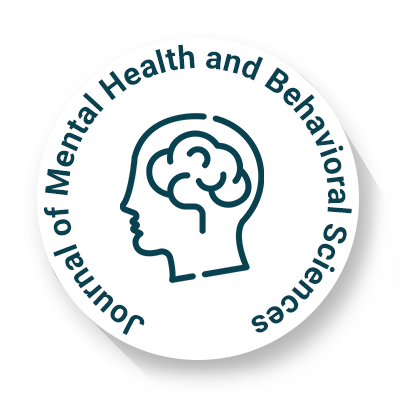
Journal of Mental Health and Behavioral Sciences
OPEN ACCESS

OPEN ACCESS
Anxiety disorders are a group of psychiatric conditions characterized by persistent, excessive fear, worry, or nervousness that significantly impairs daily functioning. While transient anxiety is a normal response to stress, pathological anxiety is chronic, disproportionate, and often debilitating. The etiology is multifactorial, involving genetic predisposition, neurobiological dysregulation, psychological traits, and environmental stressors.
The clinical presentation includes both psychological and physiological symptoms. Psychological manifestations include excessive apprehension, restlessness, irritability, impaired concentration, and sleep disturbances. Physiological symptoms involve autonomic hyperactivity, presenting as tachycardia, diaphoresis, tremors, dizziness, nausea, myalgia, and fatigue. In severe cases, chest pain and dyspnea may mimic acute cardiovascular pathology, necessitating careful differential diagnosis. A hallmark of anxiety disorders is avoidance behaviour, reinforcing symptom persistence and functional impairment.
The pathophysiology of anxiety disorders involves dysfunction in key neurotransmitter systems, including serotonin, dopamine, and gamma-aminobutyric acid (GABA). Dysregulation of the hypothalamic-pituitary-adrenal (HPA) axis is also implicated, contributing to hyperarousal and stress sensitivity. Genetic predisposition plays a significant role, with individuals having a family history of anxiety at increased risk. Environmental and psychosocial factors, including childhood trauma, financial stress, and occupational pressure, serve as triggers or exacerbating factors. Certain personality traits, such as perfectionism and low self-esteem, further increase susceptibility. Additionally, endocrine disorders (e.g., hyperthyroidism) and substance use, particularly alcohol, caffeine, and nicotine, may mimic or aggravate anxiety symptoms.
Diagnosis is established through comprehensive clinical evaluation, incorporating structured psychiatric interviews and validated psychometric tools such as the Generalized Anxiety Disorder 7-item scale (GAD-7) and the Beck Anxiety Inventory (BAI). Symptoms must persist for at least six months and significantly impair daily functioning. Given the overlap with mood disorders, post-traumatic stress disorder (PTSD), and obsessive-compulsive disorder (OCD), differential diagnosis is essential.
Management involves an integrative approach comprising psychotherapy, pharmacotherapy, and lifestyle modifications. Cognitive-behavioural therapy (CBT) is the first-line psychotherapeutic intervention, focusing on cognitive restructuring and exposure therapy. Pharmacological treatment primarily includes selective serotonin reuptake inhibitors (SSRIs) and serotonin-norepinephrine reuptake inhibitors (SNRIs), which regulate neurotransmitter function. Benzodiazepines may be used for acute symptom relief but pose risks of dependence and withdrawal.
Lifestyle interventions play a crucial role in symptom management. Regular physical activity reduces stress and enhances neuroplasticity, while mindfulness-based therapies aid emotional regulation. A nutrient-rich diet containing omega-3 fatty acids, magnesium, and B vitamins supports neurological function. Sleep hygiene optimization and reducing caffeine and stimulant intake further contribute to symptom stabilization.
Anxiety disorders are among the most prevalent psychiatric conditions, affecting approximately 12% of individuals annually and up to 30% over a lifetime. Women are disproportionately affected. The disorder contributes to workplace absenteeism, reduced productivity, and increased healthcare utilization. If untreated, complications include depression, substance use disorders, and increased suicide risk.
In conclusion, anxiety disorders are serious but treatable conditions. Early diagnosis, evidence-based treatment, and lifestyle modifications are essential for effective management. Increasing awareness and reducing stigma are critical to ensuring timely access to appropriate care.